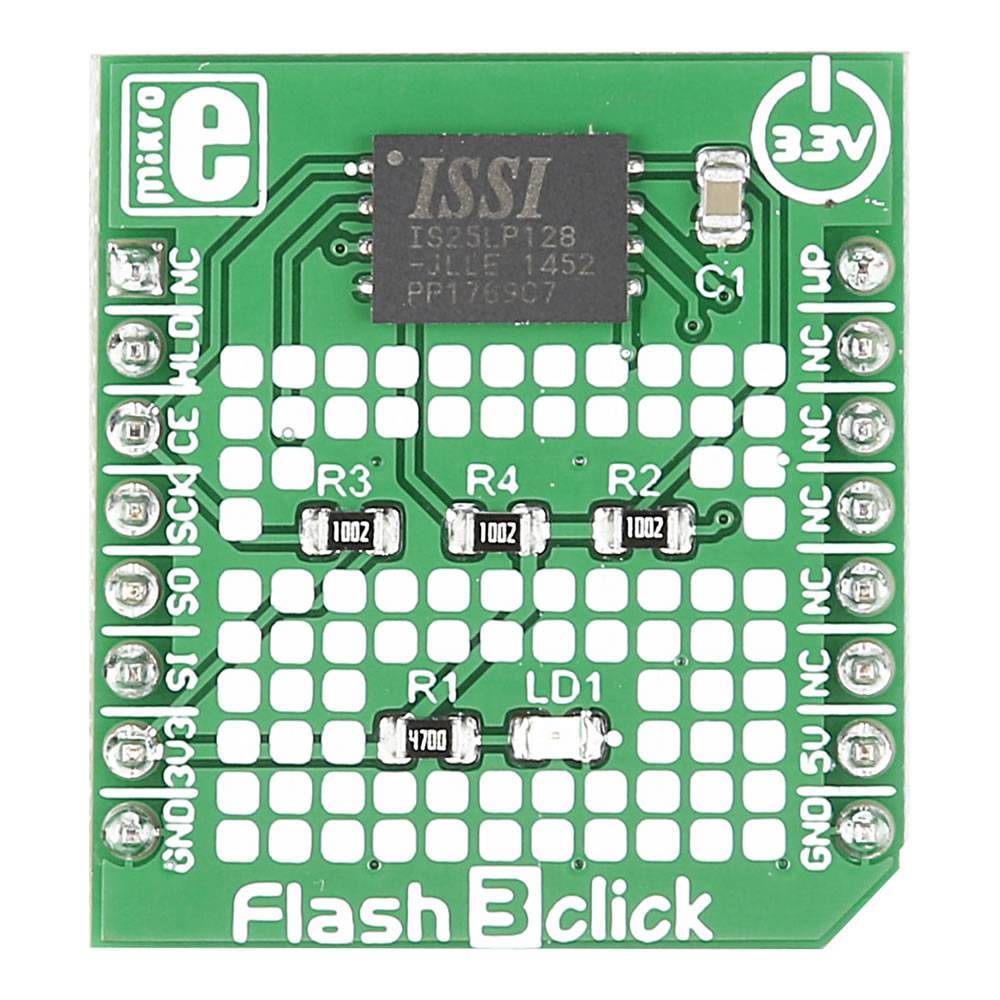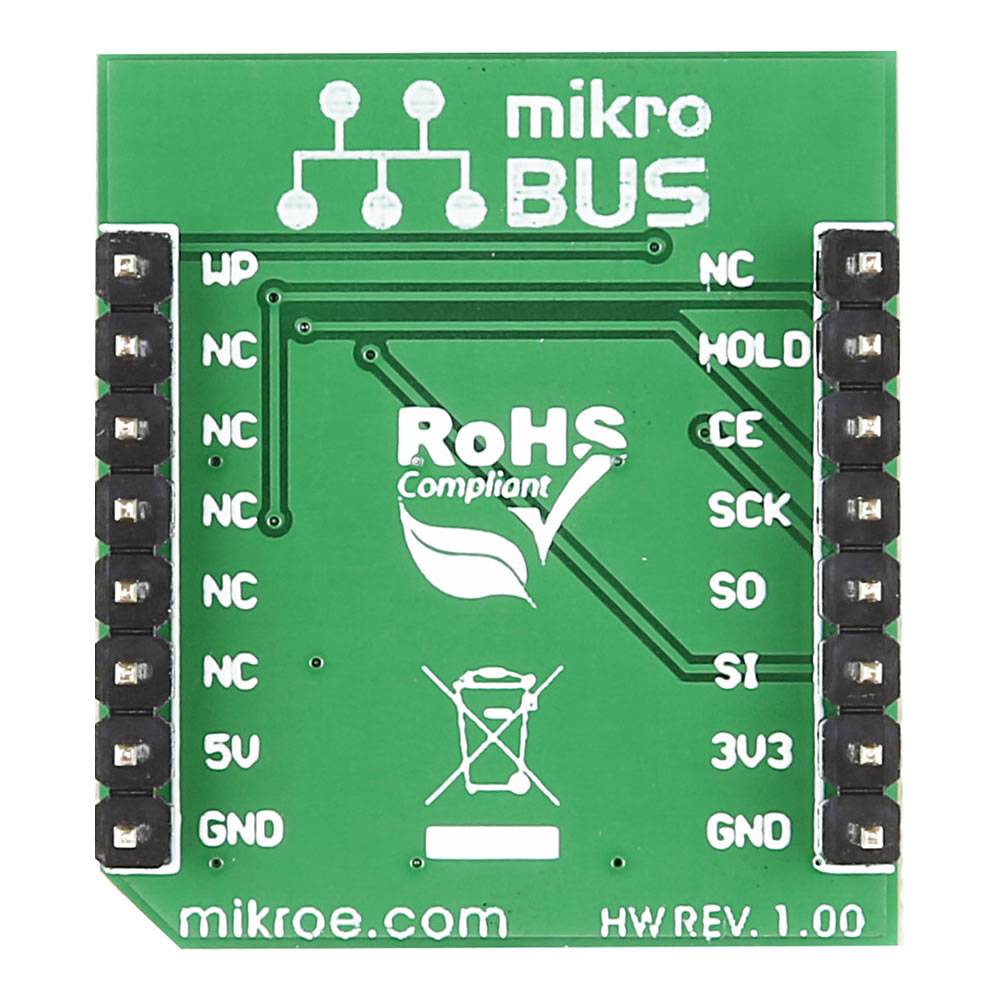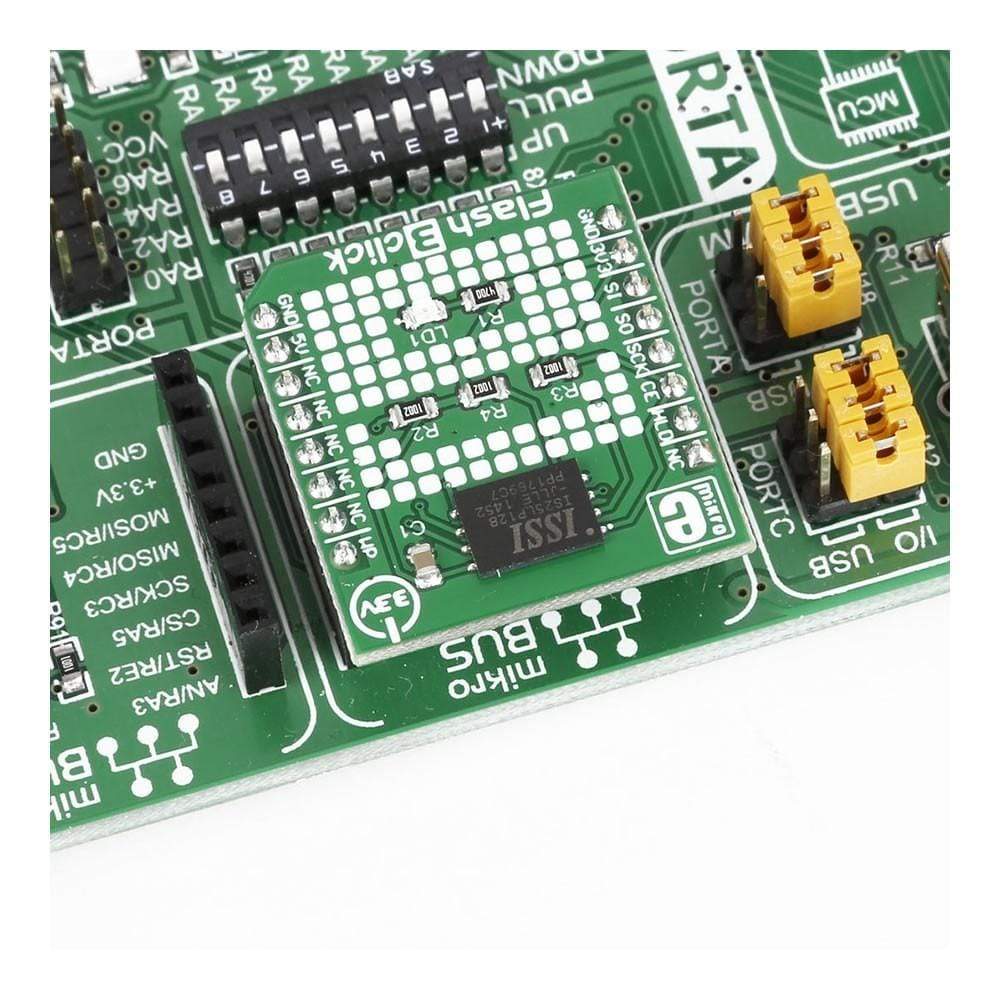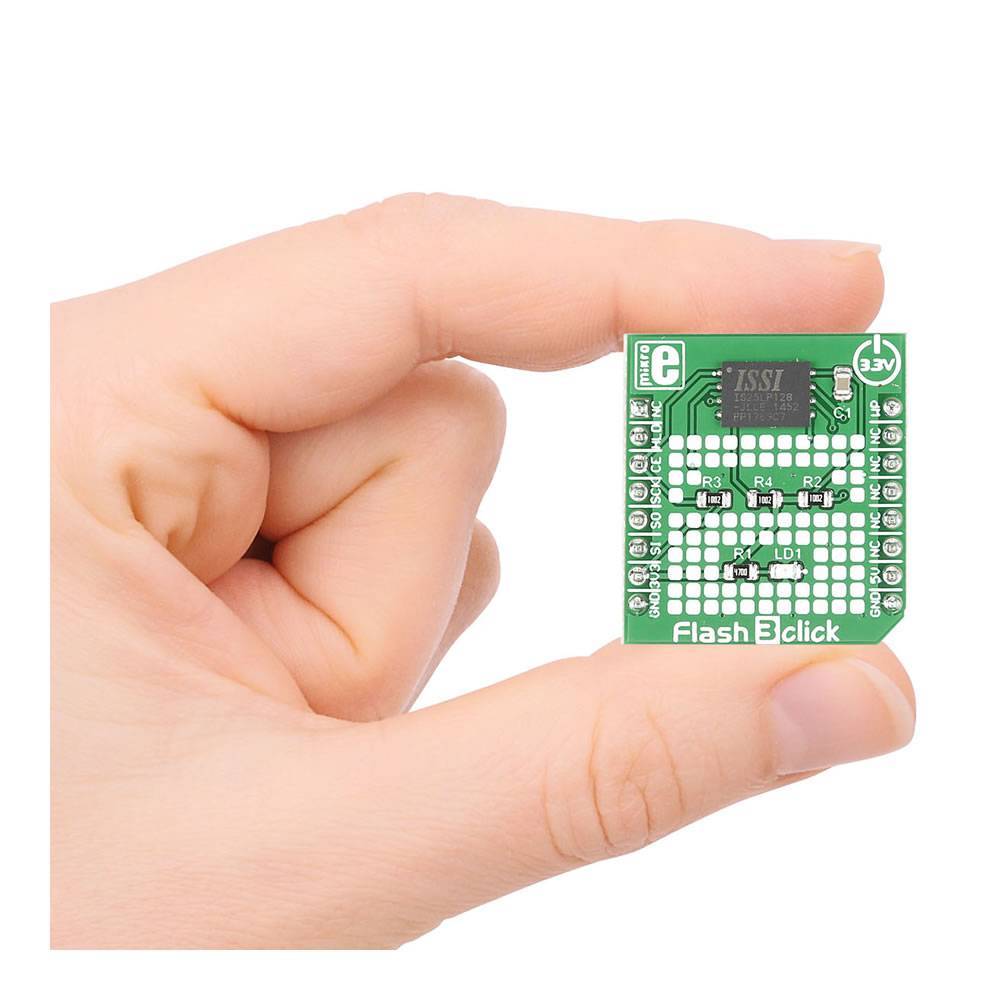



Overview
The Flash 3 Click Board™ is a mikroBUS add-on board for adding more Flash Memory to your target board microcontroller. It carries an ISSI IS25LP128 IC with a 128 Mbit capacity.
Downloads
The high-performance Flash chip operates at 50MHz at Normal and 133MHz at Fast Read speeds.
It is specified to standard 100,000 erase/program cycles with more than 20 years of data retention. The data can be erased in sectors or blocks and programmed with 1 to 256 bytes per page.
Each chip has a 128-bit unique ID for each device.
The Flash 3 Click Board™ communicates with the target board through the mikroBUS™ SPI interface with additional functionality provided by HOLD, CE and WP pins. It is designed to use a 3.3V power supply only.
| General Information | |
|---|---|
Part Number (SKU) |
MIKROE-2374
|
Manufacturer |
|
| Physical and Mechanical | |
Weight |
0.017 kg
|
| Other | |
Country of Origin |
|
HS Code Customs Tariff code
|
|
EAN |
8606018711215
|
Warranty |
|
Frequently Asked Questions
Have a Question?
Be the first to ask a question about this.




